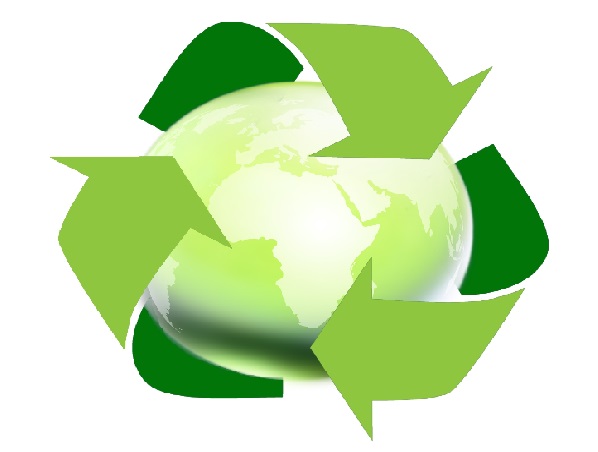
Explanation Biobased Materials
Biobased materials explained
In short, we can say that bio-based material is an organic material that is more environmentally friendly than other materials. In everyday language, bio-based material is also called biomaterial. Examples of bio-based materials are wood, cardboard, paper and bioplastics such as PLA and Mater-Bi. Raw materials for bio-based materials include sugar, starch, proteins, wood fibres and natural fibres, natural oils and natural fats, biowaste and natural rubber
Mater-Bi
Mater-Bi is a plant-based raw material made from corn starch and is 100% compostable. The organic plastic is a strong film with many of the properties of normal plastic, but unlike normal plastic, the raw material is bio-based and the film is made from plant-based raw materials. Mater-Bi is mainly used for the production of shirt carrier bags, is certified and complies with the European composting standard EN-13432.
Polylactic Acids (PLA)
PLA (from Poly Lactic Acid) is a bioplastic made entirely from vegetable raw materials and is 100% compostable. For PLA, lactic acids are extracted from starch, beets and corn and processed into a granulate, which ultimately enables the production of PLA. The material is sustainable because no fossil fuels are used in its extraction. PLA is transparent and is often used for packaging fresh (organic) produce such as strawberries, bananas and peppers. But the material is also becoming increasingly popular in other industries. The PLA used by EcolinQ is certified and complies with the European composting standard EN-13432.
CPLA
Stands for Crystalized Polylactic Acid. It is actually the same as PLA, as described above, the only difference being that it is diluted with lime or talc. This creates a heat-resistant material with a white colour. Like PLA, CPLA is made from maize, for example. At least the starch from the maize with lime added. Properties of CPLA are that it is very strong material, water-resistant, food-safe and industrially compostable.
Bagasse
This is a great material. In fact, it is made from organic waste. It couldn't be more beautiful! This is because it is made from waste or residue of sugarcane. After the juice is squeezed out of the stems of sugarcane, a kind of porridge-like and fibrous waste is created. And what was previously thrown away is now used on a large scale to produce Bagasse pulp. Bagasse, among other things, is used to make single-use cutlery, plates and other disposable items.
PBT or Pbat
Another type of bioplastic is PBT. PBT stands for polybutylene terephthalate and is a type of plastic that is completely biodegradable within 90 days. The material is easy to combine with PLA, it is well possible to make the outside of your packaging materials from to PBT and laminate the inside with PLA, but also vice versa PLA can be used for the inside and PBT for the outside. Where PLA is only industrially compostable, PBT is also well suited for composting "at home". So no industrial machine is needed to break down the material. There is only one small disadvantage of this raw material: it is somewhat less clear. Because the material is made of lactic acids, it looks slightly tarnished, like plastic.
Palm leaf
All our articles made of palm leaves are heat and water resistant. Furthermore, no fossil fuels are used in the production of the articles and dat material is 100% biodegradable and natural. How do we proceed? Palm leaves are pressed into the shape of plates, bowls, cups and much more! This way the products are 100% bio-based.
Cellophane
Is also a bioplastic and made from Cellulose. Cellulose is usually extracted from wood, as is done with certain types of paper. The material is thin, clear/transparent and breaks down biologically when in contact with water. If there is some plastic in the cellophane, it is good sealable. Without plastic, it is not good sealable.
Kraft paper FSC
FSC stands for Forest Stewardship Council and refers to an international label for paper that is supported by almost all European governments and by environmental organisations worldwide. Only products made from wood sourced from FSC-certified forests are eligible for this label. Our FSC kraft paper is made from wood chips that mainly come from conifers, firs and pines. The kraft paper therefore also has a natural light brown colour. If you prefer white kraft paper, the paper is bleached. This can be bleached by chlorine, ECF or TCF. TCF, however, is chlorine-free and therefore the best choice from an ecological point of view.
Sugar cane
Sugar cane is a renewable and sustainable raw material used to produce bioplastics and packaging, among other things. As it grows, the plant absorbs CO2, giving sugarcane products a lower carbon footprint. Sugar cane can be processed into bio-polyethylene (bio-PE), a biodegradable alternative to conventional plastic. It is applicable for disposables, disposable cutlery and cups. Although sugarcane is environmentally friendly, it often requires industrial composting conditions to fully degrade, and land use can present challenges.Bio-PE
During the production of sugar cane, waste materials remain that can be used as a basis for new materials such as Bio-PE. Bio-PE is made from various renewable raw materials, such as sugar cane, and is therefore an excellent bio-based material. Bio-PE is used, among other things, for the production of plastic carrier bags and packaging for cleaning products.
Bioplastics
Bioplastics is a general term for types of plastic that are made from biological material or are biodegradable. Biological material refers to plants such as cane sugar, corn and potatoes.
PVA (soluble bioplastic)
PVA is short for Polyvinylalchohol and is a bioplastic that dissolves in water. The soluble film is odourless and non-toxic. The film has a high tensile strength, is flexible and very difficult for oxygen and aromas to penetrate. At higher humidity, however, the fibre absorbs more water, which reduces its tensile strength and thus eventually dissolves in water. (source: wikipedia).